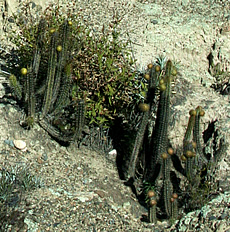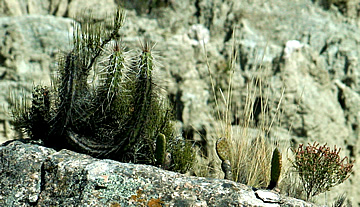

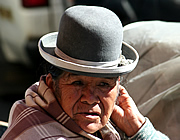
La Paz is a bustling city of contrasts which retains much of the indigenous Indian cultures; the streets are fascinating to wander, especially the older market areas.
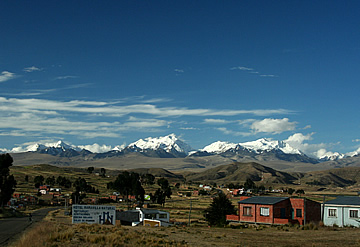
From Lake Titicaca it was about an hour and a half drive across the Altiplano to La Paz. It was towards the end of the day and quite clear so the views of the High Andes were fabulous. The same can't really be said of La Paz, an enormous city which sits in a bowl surrounded by snow-capped mountains.
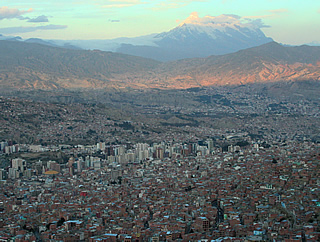
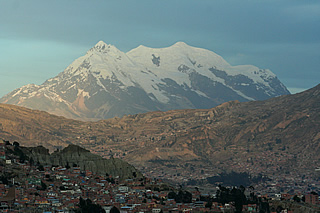
At about 3600m it is the highest capital city in the world. Its location below the Altiplano was the reason the Spanish chose to create a city here, to avoid the cold winds sweeping the plains above. As the population grows the city climbs higher up the sides of the hills which enclose it. The airport, from where we flew to Sucre, lies on the altiplano at over 4000m.
We were staying in the Europa in the heart of the city with a huge room on the top (twelfth) floor giving us a great view over the city to Mount Illimani.
On our first full day in La Paz our guide collected us and we drove up to the old part of the city, for a morning walking tour. It's a big city and we wandered around two or three times on our own too, to try and see as much as possible.
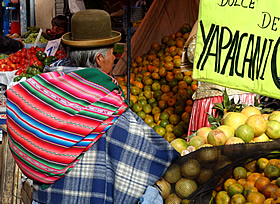
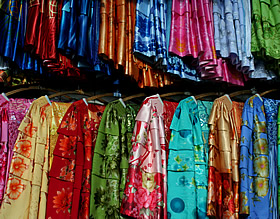
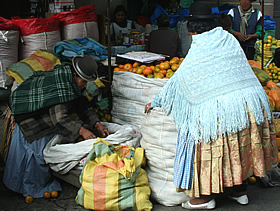
La Paz is a vibrant, colourful city full of contrasts. Where we were staying it's very modern with high rise buildings, busy roads, fine restaurants and almost everyone in European dress. In the north of the city, around Plaza Eguino and Avenida Buenes Aeres for instance, it is much more interesting, still very busy, with traditional dress much more in evidence on the older women. Many of the streets are crammed with stalls selling all kinds of things, from oranges - mountains of them - to kitchen utensils.
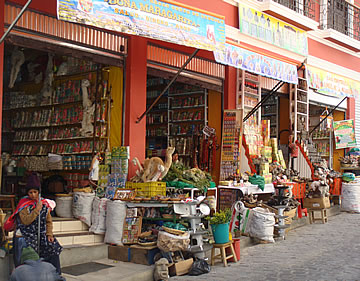
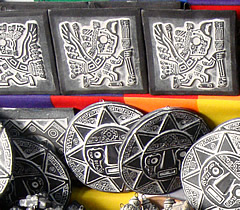
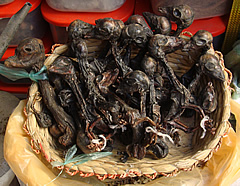
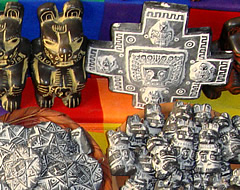
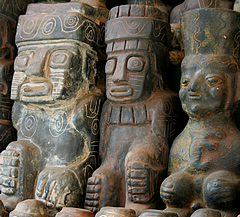
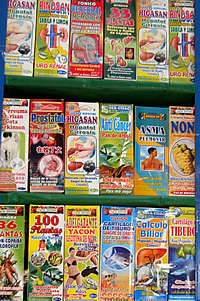
The Witches' Market is not for the faint-hearted. It is actually an area where traditional medicines and amulets are sold. So there are a lot of llama foetuses, for instance, and small dead llamas. We were assured that these were from miscarriages and stillbirths, but maybe that's just to keep the tourist happy. Representations of the sun and the stepped Andean cross feature strongly in the amulets.
Plates of offerings are prepared to bring good luck or to appease the earth goddess, Pachamama, usually by burning them. They are still used at the start of a building construction, for instance, buried in the foundations, to appease Pachamama for the scar inflicted on the earth.
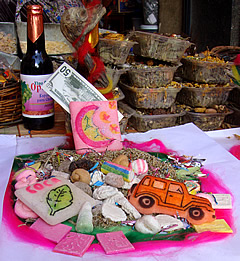
They might include herbs, perhaps llama meat and wool, coca leaves or representations of coca leaves, representations of wealth such as fake money or a small sugar car, walnuts representing good health - the list is probably endless.
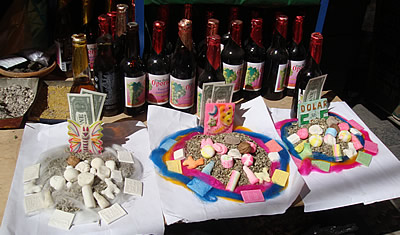
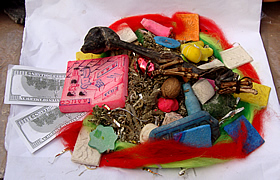
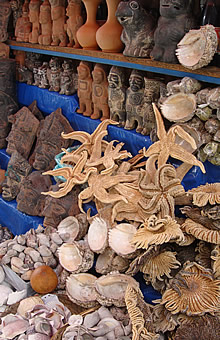
Though the majority of people are Catholics, many still consider themselves of native Indian descent and retain their traditional beliefs. The Aymara are the largest of the indigenous groups.
The indigenous women wearing traditional clothing and bowler hats are called cholitas. The story goes that a local tradesman ordered a batch from England for workers in La Paz, only to discover they were too small. Reluctant to lose his investment he sold them to the local women who really took to them, and the rest is history.
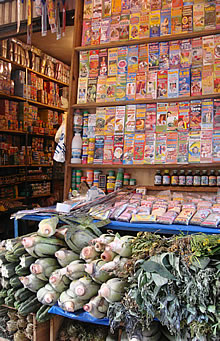
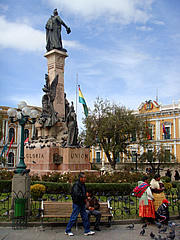
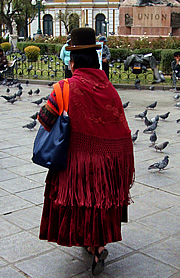
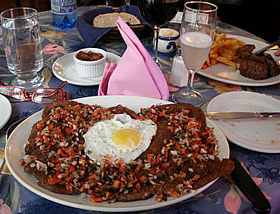
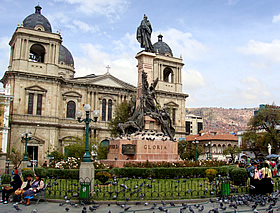
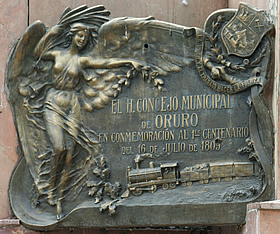
Plaza Murillo is the colonial centre of the city where the Cathedral, National Congress and the Government Palace can be found. The Government Palace is also known as Palacio Quemado - the "burned" palace - because it has twice burned down. None of them are very remarkable buildings though they are proud of the stained glass in the Cathedral.
The struggle for independence from the Spanish began with an uprising in Sucre in 1809, followed by a rebellion on July 16th of the same year in La Paz, led by Pedro Domingo Murillo. He was caught and hanged in the square in 1910. The square was renamed in his honour.
The statue in the centre of the square is of a later president, Gualberto Villarroel, who was assassinated by a mob, hanged from a lamp post in the square.
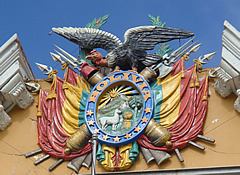
The Coat of Arms of Bolivia, which can be seen on the pediment of the Palacio Quemado, includes flags, muskets, canon and an Andean condor.
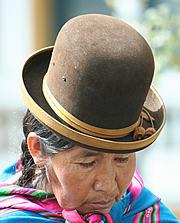
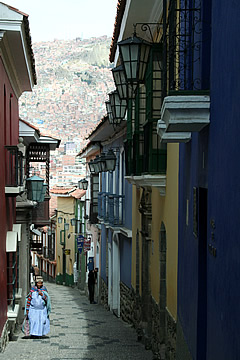
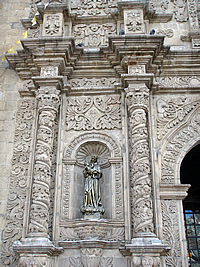
It is a pleasant enough square, rather over-populated with pigeons.
A few blocks north of Plaza Murillo is peaceful Calle Jaén. This pretty colonial street has just about the only domestic scale colonial architecture remaining in La Paz.
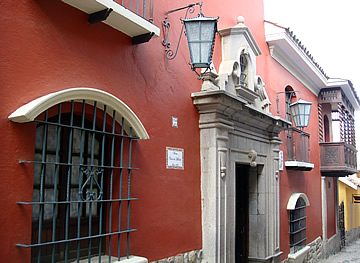
Originally it was called Calle Kaura Kancha and was where the market for llamas, alpacas and vicuñas was held in the seventeenth century, for the indigenous people in the villages close to La Paz.. It was renamed for Don Apolinar Jaén, a native of Oruro and a prominent revolutionary.
The street is said to be haunted by all manner of spirits, the most infamous of which is a widow who seduces drunk men and carries them off for a mysterious adventure. To ward against the malignant spirits the residents placed a green cross at the lower entrance to the street.
The Church of San Francisco on Plaza San Francisco has very fine stone carving on the facade, it's a much more attractive building than the cathedral. Inside there are elaborate gold altars and a fine barrel-vaulted roof. Even better, the characters on the facade are a mix of fantastical native art and Catholic tradition.
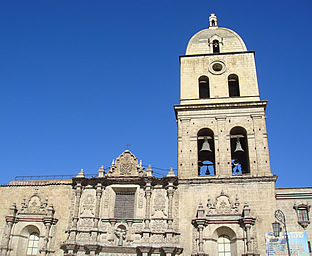
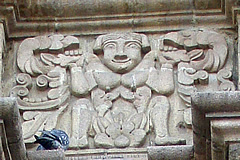
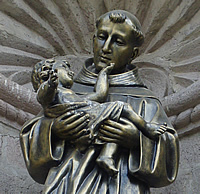
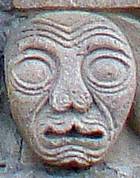
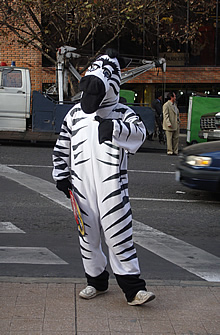
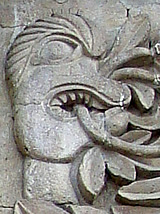
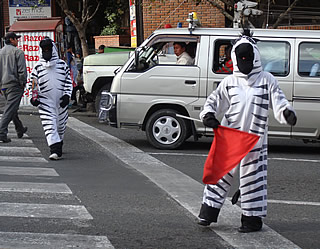
One of the things we really liked about La Paz were the Zebras. These are poor youngsters, hired by the city, dressed in zebra costumes and attempting, with a great deal of humour, to make vehicles and pedestrians behave properly on the city's roads. They are a breath of fresh air in a typically impersonal big city - La Paz can be proud of them.
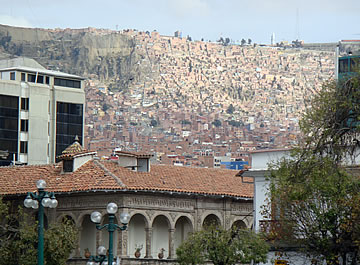
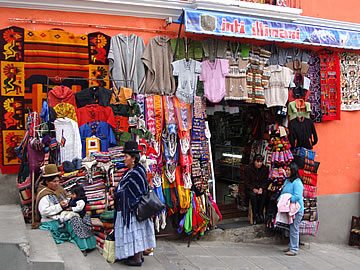
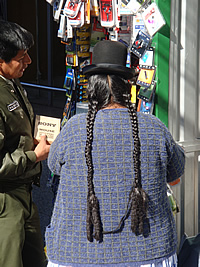
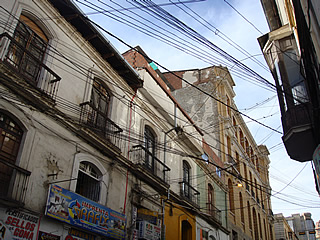
We wandered up to Plaza Murillo one day in search of a good map of the Uyuni area and found one at Gisbert & Co, Calle Comercio, a delightfully old-fashioned book store - the payment system had us stumped for a while!
Afterwards we stopped in at Alexander Coffee on Potosi, situated in a rather dilapidated building but inside it's fine. They have very good coffee and excellent hot chocolate. Again, I was a bit bemused at first until I discovered the block of chocolate at the bottom of the hot milk, needing to be stirred to melt - then it was excellent!
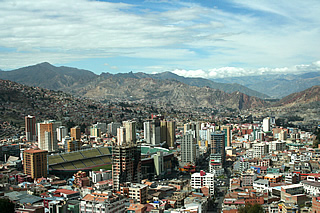
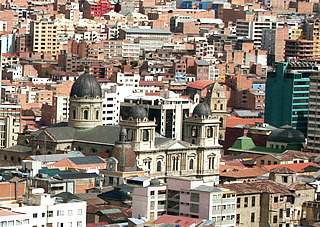
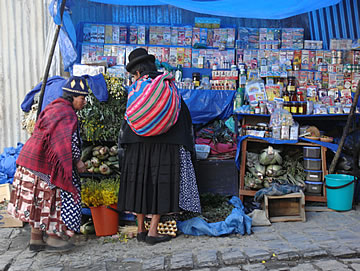
To the east of La Paz the Mirador Killi Killi gives extensive views of the city.
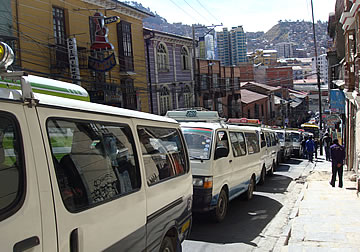

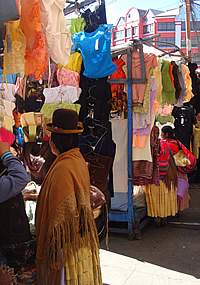
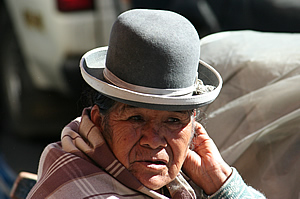
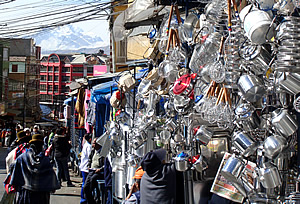
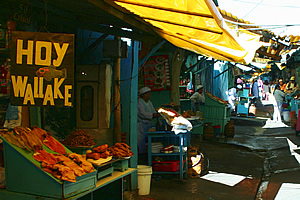
Heading north one morning towards Avenida Buenos Aires we were looking to explore the market and artisans areas of the city. It really is a colourful area and well worth the effort of climbing the uphill streets to get there. It's quite a long way from the downtown area where we were staying. We wandered into the meat market at one point where a very jolly man was heaving sides of beef around - more than happy to have his photograph taken. The views of Illimani from here are excellent.
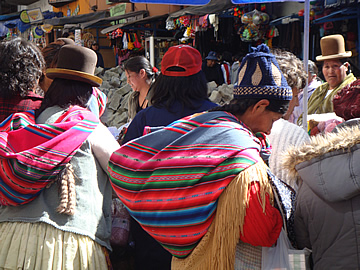
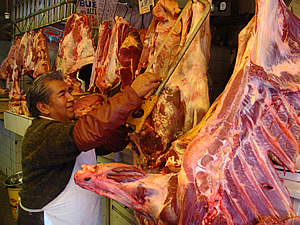
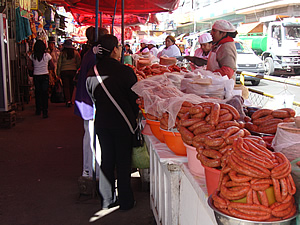
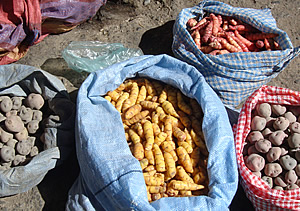
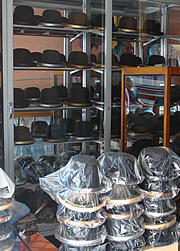
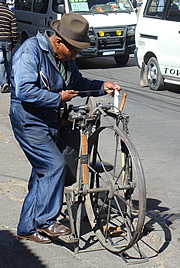
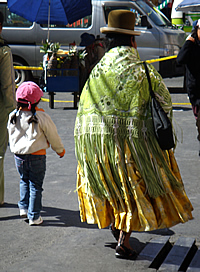
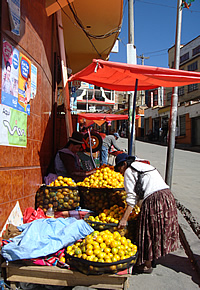
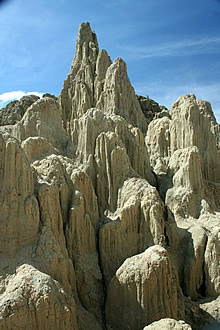
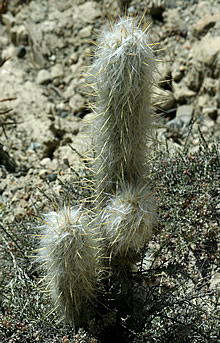
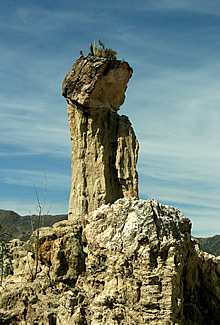
South of the city, and on every tourist's agenda, is the Valle de la Luna - the Valley of the Moon.
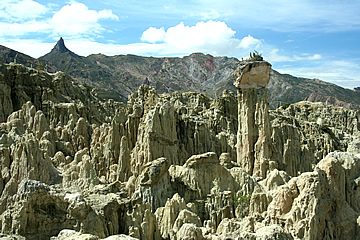
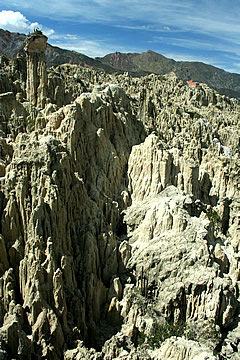
Compared to some of the spectacular USA landscapes (or other parts of Bolivia!) it's a bit disappointing, but interesting nonetheless, if only for the fact that it hasn't yet been completely washed away by the torrential rains that La Paz experiences. The lumpy landscape seems to be composed only of mud-packed pebbles. There are some great cactii here though!
